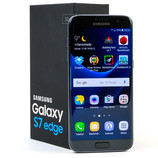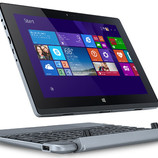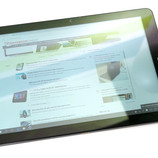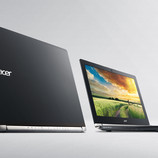Asus N552VX-FY103T Notebook Review
Working For Notebookcheck
Are you a loyal reader of notebookcheck? Are you a techie who knows how to write? Then join our Team!
Especially wanted:
News Editor, Review Editor (Smartphones) -Details here
News Editor, Review Editor (Smartphones) -Details here
Test device courtesy of Asus Deutschland
[+] Add to comparison
» Compare devices 0
See our Top 10 Notebooks:
» Multimedia, » Gaming, » Lightweight Gaming
» Budget Office, » Business, » Workstations
» Subnotebooks, » Utrabooks, » Convertibles
» Budget Office, » Business, » Workstations
» Subnotebooks, » Utrabooks, » Convertibles
» Top 10 under 300 Euros, » under 500 Euros
» Best Notebooks for University Students
» Top Windows alternatives to Apple's MacBook series
» Best Notebook Displays
» Best Notebooks for University Students
» Top Windows alternatives to Apple's MacBook series
» Best Notebook Displays
Top 10 Tablets / Smartphones:
» Tablets, » Windows Tablets
» Smartphones
» Smartphones
Case
To put things straight: Asus' N552VX is not much slimmer than its predecessor. However, the clever design of the matte-black underside suggests a slim laptop.
Light brown, silver and black dominate the casing. The latter is found on the display's matte bezel and non-slip structured underside. Asus promotes the N552VX as "One-Body Aluminum Casing". Unfortunately, this is not true because the base is composed of two components and the lower part is plastic. However, the upper side shimmers in aluminum that defies fingerprints quite successfully. The same is true of the lid's aluminum back. It looks like the concentric cut familiar in Asus' ZenBooks with an illuminated Asus logo in the center. In addition to the rounded corners and successful surfaces, the concentric perforated grille below the hinges set visual highlights.
The base can be easily warped with a lot of effort. It does not produce any noises. The stability and apparently impeccable build quality convey a solid impression despite a lot of plastic. The display's lid is easy to open with one hand and rocks only slightly during movements. Attention has been paid to ensure sufficient stability here.










Connectivity
Communication
Thanks to the very high-quality Intel Dual Band Wireless-AC 7265 Wi-Fi/Bluetooth 4.0 module, Asus' N552VX-FY103T achieves high speeds in either the 2.4 or 5 GHz band. This pays off, particularly in city centers, as well as in office or apartment buildings where 2.4 GHz Wi-Fi usually prevails and interferes with the user's own transmission rates. The option of using the 5 GHz band has advantages here.
The author setup a personal test scenario in a reinforced concrete apartment building (12 other routers). A 2.4 GHz band router, which was deliberately hidden unfavorably behind a 49-inch screen, was used for connecting to the Internet. Although the author closed all the doors, the connection remained stable with at least 2 signal bars in every corner of the apartment. The reception was excellent with 5 bars in the front yard (25 m/~82 ft linear to the router through a window). The review sample's reception was impressive in this intentionally unfavorable test setup. Therefore, problems will be unlikely whether at home with a good router or in an office building with a run-of-the-mill router.
Accessories
In addition to the power supply, only the instructions and warranty notes were found in the box. No recovery media or a recovery partition was included.
Maintenance
Unfortunately, traditionally removable batteries and maintenance hatches are no longer a matter of course even in larger, high-performance laptops such as the review sample. At least, Asus has incorporated a maintenance hatch that is secured by two screws. It is easy to open and allows accessing the hard drive and two RAM banks, but not the fan or, regrettably, the empty M.2 SSD slot (22x80mm/~0.86x3.1in).
Input Devices
Display
| |||||||||||||||||||||||||
X-Rite i1Pro 2
Maximum: 336 cd/m² Average: 304.3 cd/m² Minimum: 19 cd/m²Brightness Distribution: 85 %
Center on Battery: 336 cd/m²
Contrast: 988:1 (Black: 0.34 cd/m²)
ΔE Color 5.26 | 1.01-23.34 Ø6.8
ΔE Greyscale 4.26 | 0.79-16.8 Ø7.1
88% sRGB (Argyll) 57% AdobeRGB 1998 (Argyll)
Gamma: 2.35
ICC File (X-Rite i1Pro 2)
| Asus N552VX-FY103T GeForce GTX 950M, 6700HQ, Toshiba MQ02ABD100H | Asus N551JK-CN166H GeForce GTX 850M, 4200H, HGST Travelstar 5K1000 HTS541010A9E680 | Acer Aspire V5-591G-71K2 GeForce GTX 950M, 6700HQ, Toshiba MQ02ABF050H (SSHD 500 + 8 GB) | Asus GL552JX-CN154H GeForce GTX 950M, 4720HQ, Micron M600 MTFDDAV128MBF | Lenovo Ideapad Y700 15ISK 80NW GeForce GTX 960M, 6700HQ, Samsung MZNLN128HCGR-000L2 | |
|---|---|---|---|---|---|
| Screen |
-16%
|
-60%
|
3%
|
-28%
| |
| Brightness Center | 336 | 323
-4%
| 249
-26%
| 326
-3%
| 258.6
-23%
|
| Black Level * | 0.34 | 0.38
-12%
| 0.48
-41%
| 0.31
9%
| 0.277
19%
|
| Contrast | 988 | 850
-14%
| 519
-47%
| 1052
6%
| 934
-5%
|
| Colorchecker DeltaE2000 * | 5.26 | 7.4
-41%
| 10.15
-93%
| 4.14
21%
| 8.1
-54%
|
| Greyscale DeltaE2000 * | 4.26 | 6.24
-46%
| 12.13
-185%
| 5.46
-28%
| 7.23
-70%
|
| Gamma * | 2.35 | 2.98 | 2.48 | 2.44 | 1.99 |
| Color Space (Percent of AdobeRGB 1998) | 57 | 69
21%
| 74
30%
| 64
12%
| 36.5
-36%
|
* ... smaller is better
Discussion
Thanks to an average brightness of 304 cd/m², the review sample is definitely suitable for outdoor use.
Display Response Times
| ↔ Response Time Black to White | ||
|---|---|---|
| 26 ms ... rise ↗ and fall ↘ combined | ↗ 5 ms rise | |
| ↘ 21 ms fall | ||
| The screen shows relatively slow response rates in our tests and may be too slow for gamers. In comparison, all tested devices range from 0.8 (minimum) to 240 (maximum) ms. » 35 % of all devices are better. This means that the measured response time is better than the average of all tested devices (29.1 ms). | ||
| ↔ Response Time 50% Grey to 80% Grey | ||
| 42 ms ... rise ↗ and fall ↘ combined | ↗ 18 ms rise | |
| ↘ 24 ms fall | ||
| The screen shows slow response rates in our tests and will be unsatisfactory for gamers. In comparison, all tested devices range from 0.9 (minimum) to 92 (maximum) ms. » 43 % of all devices are better. This means that the measured response time is similar to the average of all tested devices (42.6 ms). | ||
Screen Flickering / PWM (Pulse-Width Modulation)
| Screen flickering / PWM not detected | ||
In comparison: 53 % of all tested devices do not use PWM to dim the display. If PWM was detected, an average of 603 (minimum: 43 - maximum: 10420) Hz was measured.
| ||
Performance
With its strong Intel Core i7-6700HQ quad-core CPU, Asus N552VX-FY103T is well-equipped for most tasks imaginable. A Core i processor (4 cores, 8 threads) is the first choice for a multimedia laptop. Unfortunately, Nvidia's GPU is only an upper mid-range model and is not really the perfect match for the high-performance CPU. Our review sample finds its limits in gaming. Nevertheless, up-to-date games (2015/2016) can be risked when willing to make compromises thanks to Nvidia's GeForce 950M (1366 x 768 pixels, no AA, medium-high details). Office software or multimedia applications are not a challenge, and even sophisticated Photoshop and PremierPro sessions (CPU-driven, GPU capacity at 30 %) are not a problem for the hardware - at least not in AC mode (see processor). Thus, users who do not prioritize games, but frequently edit and render videos should cope well with this laptop.
Processor
| Asus N552VX-FY103T GeForce GTX 950M, 6700HQ, Toshiba MQ02ABD100H | Asus N551JK-CN166H GeForce GTX 850M, 4200H, HGST Travelstar 5K1000 HTS541010A9E680 | Acer Aspire V5-591G-71K2 GeForce GTX 950M, 6700HQ, Toshiba MQ02ABF050H (SSHD 500 + 8 GB) | Asus GL552JX-CN154H GeForce GTX 950M, 4720HQ, Micron M600 MTFDDAV128MBF | Lenovo Ideapad Y700 15ISK 80NW GeForce GTX 960M, 6700HQ, Samsung MZNLN128HCGR-000L2 | |
|---|---|---|---|---|---|
| Cinebench R10 |
-30%
|
1%
|
-6%
|
-2%
| |
| Rendering Multiple CPUs 32Bit | 20388 | 10668
-48%
| 20433
0%
| 19276
-5%
| 20302
0%
|
| Rendering Single 32Bit | 5453 | 4773
-12%
| 5547
2%
| 5104
-6%
| 5283
-3%
|
| Cinebench R11.5 |
-33%
|
1%
|
-5%
|
-6%
| |
| CPU Multi 64Bit | 7.42 | 3.5
-53%
| 7.48
1%
| 7.35
-1%
| 7.46
1%
|
| CPU Single 64Bit | 1.68 | 1.46
-13%
| 1.68
0%
| 1.54
-8%
| 1.48
-12%
|
| Cinebench R15 |
-32%
|
1%
|
-5%
|
-6%
| |
| CPU Multi 64Bit | 673 | 323
-52%
| 677
1%
| 669
-1%
| 676
0%
|
| CPU Single 64Bit | 146 | 130
-11%
| 148
1%
| 133
-9%
| 129
-12%
|
| Total Average (Program / Settings) |
-32% / -32%
|
1% / 1%
|
-5% / -5%
|
-5% / -4%
|
... in comparison
System Performance
| Asus N552VX-FY103T GeForce GTX 950M, 6700HQ, Toshiba MQ02ABD100H | Asus N551JK-CN166H GeForce GTX 850M, 4200H, HGST Travelstar 5K1000 HTS541010A9E680 | Acer Aspire V5-591G-71K2 GeForce GTX 950M, 6700HQ, Toshiba MQ02ABF050H (SSHD 500 + 8 GB) | Asus GL552JX-CN154H GeForce GTX 950M, 4720HQ, Micron M600 MTFDDAV128MBF | Lenovo Ideapad Y700 15ISK 80NW GeForce GTX 960M, 6700HQ, Samsung MZNLN128HCGR-000L2 | |
|---|---|---|---|---|---|
| PCMark 7 |
-3%
|
-2%
|
41%
|
36%
| |
| Score | 4714 | 4131
-12%
| 4673
-1%
| 5829
24%
| 5918
26%
|
| Lightweight | 3709 | 3941
6%
| 3745
1%
| 5889
59%
| 5543
49%
|
| Productivity | 3507 | 3494
0%
| 3382
-4%
| 5180
48%
| 5008
43%
|
| Creativity | 7837 | 7266
-7%
| 7654
-2%
| 10382
32%
| 9899
26%
|
| PCMark 8 |
-12%
|
7%
|
8%
|
11%
| |
| Home Score Accelerated v2 | 3452 | 3113
-10%
| 3719
8%
| 3637
5%
| 3845
11%
|
| Work Score Accelerated v2 | 4503 | 3881
-14%
| 4747
5%
| 4972
10%
| 5011
11%
|
| Total Average (Program / Settings) |
-8% / -6%
|
3% / 1%
|
25% / 30%
|
24% / 28%
|
| PCMark 7 Score |
| 4714 points |
| PCMark 8 Home Score Accelerated v2 |
| 3452 points |
| PCMark 8 Work Score Accelerated v2 |
| 4503 points |
Help
... in comparison
Storage Devices
Graphics Card
The GeForce 950M houses the same GM108 chip (Maxwell) as the older, only marginally lower clocked Nvidia GeForce 850M with 640 Shader units and a 128-bit interface for GDDR5/DDR3. The DDR3 is mostly utilized as VRAM, which prevents the GM108 chip from developing its full potential. 4096 MB places the Acer Aspire V5-591G-71K2 slightly ahead of versions with 2048 MB of DDR3 VRAM. The comparison with MSI's PE60 2QD that is equipped with a GDDR5 VRAM is also interesting.
Nvidia's GeForce 950M with a DDR3 VRAM clocks at a base clock of 993 MHz, which can be boosted to 1124 MHz via Turbo. Asus follows Nvidia's specifications exactly. The 2048 MB DDR3 VRAM memory clocks at 2002 MHz.
Looking at our "Computer Games on Laptop Graphics Cards", Nvidia's GeForce 950M is three times as fast as the CPU-integrated and considerably more frugal Intel HD Graphics 530. The latter takes care of less computing-intensive (2D) graphic calculations, and thus unloads the battery, thanks to Optimus technology. Switching between both cores is automatic, but the user can always intervene manually.
3DMark 11 | 3DMark (2013)
| 3DMark 11 - 1280x720 Performance (sort by value) | |
| Lenovo Ideapad Y700 15ISK 80NW | |
| Acer Aspire V5-591G-71K2 | |
| MSI PE60 2QD | |
| Asus N552VX-FY103T | |
| Asus GL552JX-CN154H | |
| Asus N551JK-CN166H | |
| 3DMark 11 Performance |
| 4579 points |
| 3DMark (2013) Ice Storm Standard Score |
| 58288 points |
| 3DMark (2013) Cloud Gate Standard Score |
| 14578 points |
| 3DMark (2013) Fire Strike Standard Score |
| 2917 points |
Help
... in comparison
Gaming Performance
The user will have to be satisfied with medium presets and the 1366x768 HD resolution in most up-to-date 3D games (2015/2016). A higher rendering quality is possible in games before 2014.
The 3DMark Cloud Gate Standard score dropped by 6% in battery mode (Nvidia Battery Boost disabled, battery state >45%), the "BioShock Infinite" benchmark (high preset) by 16%, and "The Rise of the Tomb Raider" (medium preset) by 17%. Unfortunately, enabling Nvidia's Battery Boost (e.g. 35 FPS) did not change this. Anyway, mobile gaming is not the strength of Asus' N552VX-FY103T due to the very limited battery capacity.
A similar picture as in the PCMark performance can be seen here. Moderate CPU and GPU load lead to minor throttling in battery mode (regardless of the battery state). Consequently, the graphics card's Turbo (1124 MHz) is only utilized heavily in AC mode during gaming (simultaneous CPU + GPU load). On a positive note, the full power is retrieved as soon as the power supply is connected.
The GPU stress test FurMark (multi GPU) produces high GPU load. The outcomes: Battery state < 45% = significant throttling (regular fluctuations from 600 to 1124 MHz); battery state > 45% = no throttling. These results are similar to those in the Cinebench R15 test.
Nvidia's GeForce 960M installed in Lenovo's IdeaPad Y700 15ISK 80NW is considerably stronger with 4096 MB of GDDR5 VRAM; we did not notice any throttling in Lenovo's laptop.
Rise of the Tomb Raider | BioShock Infinite | Dirt Rally
| Rise of the Tomb Raider | |
| 1366x768 Medium Preset AF:2x | |
| Asus N551ZU-CN007H | |
| MSI PE60 2QD | |
| Asus N552VX-FY103T | |
| 1920x1080 High Preset AA:FX AF:4x | |
| Asus N551ZU-CN007H | |
| MSI PE60 2QD | |
| Asus N552VX-FY103T | |
| low | med. | high | ultra | ||
| BioShock Infinite (2013) | 101.5 | 84.3 | 27.7 | fps | |
| Dirt Rally (2015) | 90.7 | 56.3 | 21.7 | fps | |
| Rise of the Tomb Raider (2016) | 35 | 21 | fps |
Emissions
| Asus N552VX-FY103T GeForce GTX 950M, 6700HQ, Toshiba MQ02ABD100H | Asus N551JK-CN166H GeForce GTX 850M, 4200H, HGST Travelstar 5K1000 HTS541010A9E680 | Acer Aspire V5-591G-71K2 GeForce GTX 950M, 6700HQ, Toshiba MQ02ABF050H (SSHD 500 + 8 GB) | Asus GL552JX-CN154H GeForce GTX 950M, 4720HQ, Micron M600 MTFDDAV128MBF | Lenovo Ideapad Y700 15ISK 80NW GeForce GTX 960M, 6700HQ, Samsung MZNLN128HCGR-000L2 | |
|---|---|---|---|---|---|
| Noise |
-2%
|
-2%
|
5%
|
-0%
| |
| Idle Minimum * | 33.1 | 32.1
3%
| 32.6
2%
| 30
9%
| 30.4
8%
|
| Idle Average * | 33.2 | 32.9
1%
| 32.6
2%
| 30
10%
| 30.5
8%
|
| Idle Maximum * | 33.2 | 33.7
-2%
| 32.6
2%
| 31.3
6%
| 33.3
-0%
|
| Load Average * | 37.7 | 42
-11%
| 42.7
-13%
| 36.9
2%
| 41.4
-10%
|
| Load Maximum * | 43.4 | 44.8
-3%
| 45.5
-5%
| 44.7
-3%
| 47
-8%
|
* ... smaller is better
Noise Level
| Idle |
33.1 / 33.2 / 33.2 dB(A)
| ||||
| HDD | 33.3 dB(A) | ||||
| DVD | 37.7 / dB(A) | ||||
| Load | 37.7 / 43.4 dB(A) | ||||
30 dB
silent
40 dB(A)
audible
50 dB(A)
loud | |||||
min:
| |||||
Temperature
Speakers
Energy Management
| Asus N552VX-FY103T GeForce GTX 950M, 6700HQ, Toshiba MQ02ABD100H | Asus N551JK-CN166H GeForce GTX 850M, 4200H, HGST Travelstar 5K1000 HTS541010A9E680 | Acer Aspire V5-591G-71K2 GeForce GTX 950M, 6700HQ, Toshiba MQ02ABF050H (SSHD 500 + 8 GB) | Asus GL552JX-CN154H GeForce GTX 950M, 4720HQ, Micron M600 MTFDDAV128MBF | Lenovo Ideapad Y700 15ISK 80NW GeForce GTX 960M, 6700HQ, Samsung MZNLN128HCGR-000L2 | |
|---|---|---|---|---|---|
| Power Consumption |
-6%
|
3%
|
4%
| ||
| Idle Minimum * | 7 | 8.6
-23%
| 6
14%
| 6.2
11%
| |
| Idle Average * | 10.9 | 12
-10%
| 9.8
10%
| 10.3
6%
| |
| Idle Maximum * | 12.9 | 13
-1%
| 11.4
12%
| 12.2
5%
| |
| Load Average * | 72 | 72.2
-0%
| 84
-17%
| 77
-7%
| |
| Load Maximum * | 109 | 104
5%
| 113.5
-4%
| 105
4%
|
* ... smaller is better
Power Consumption
| Off / Standby | |
| Idle | |
| Load | |
| Key: min: | |
Battery Runtime
The capacity of every battery has to be considered when assessing the battery life. Our review sample: 44 Wh, 3200 mAh; the Asus N551JK-CN166H: 56 Wh, 5200 mAh; the Acer Aspire V5-591G-71K2: 56 Wh, 5000 mAh, the Asus GL552JX: 48 Wh, 3200 mAh; The Lenovo IdeaPad Y700 15ISK 80NW: 60 Wh, 4050 mAh. Other battery capacities were not available at the time of testing.
Unfortunately, DVD and load runtimes are very tight. The Wi-Fi time is just satisfactory. Asus has managed to provide acceptable runtimes despite the battery's low capacity (probably thanks to the well-directed modifications). However, these modifications have some unwelcome side effects. To be more precise: Throttling in battery mode as mentioned in Processor and Gaming Performance.
The Asus GL552JX does not do a better job and delivers similar outcomes here. At least a 56-Wh battery should be matter of course in the multimedia performance category - particularly in a model that Asus promotes as "Exciting, when best meets best" on their German website.
Battery Runtime
| Idle (without WLAN, min brightness) |
| 5h 57min |
| WiFi Surfing v1.3 |
| 4h 28min |
| DVD |
| 1h 57min |
| Load (maximum brightness) |
| 1h 08min |
| Asus N552VX-FY103T 44 Wh | Asus N551JK-CN166H 56 Wh | Acer Aspire V5-591G-71K2 56 Wh | Asus GL552JX-CN154H 48 Wh | |
|---|---|---|---|---|
| Battery Runtime |
17%
|
51%
|
-3%
| |
| Reader / Idle | 357 | 436
22%
| 715
100%
| 223
-38%
|
| Load | 68 | 76
12%
| 108
59%
| 100
47%
|
| WiFi v1.3 | 268 | 255
-5%
| 221
-18%
| |
| WiFi | 271 |
Verdict
Asus N552VX-FY103T - 03/17/2016 v5
Marcus Conrad
Marcus Conrad
·
0








